一 : 3dmax中怎么设置vr相片级成品最终渲染参数?
3dmax渲染参数:
1)贴缓冲区:勾选启动内置贴缓冲区;分辨率3200*2400清晰度好,看个人要求。
“www.61k.com)2)类型:自适应确定性蒙特卡洛;抗锯齿过滤器:Mitchell-Netravali;环境:打开
3)勾选钳制输出
4)打开间接照明;二次反弹的全局照明引擎改为灯光缓存
5)发光图:中;半球细分:50;插值采样:30
6)灯光缓存:细分1800
1、贴缓冲区:勾选启动内置贴缓冲区;分辨率3200*2400清晰度好,看个人要求。
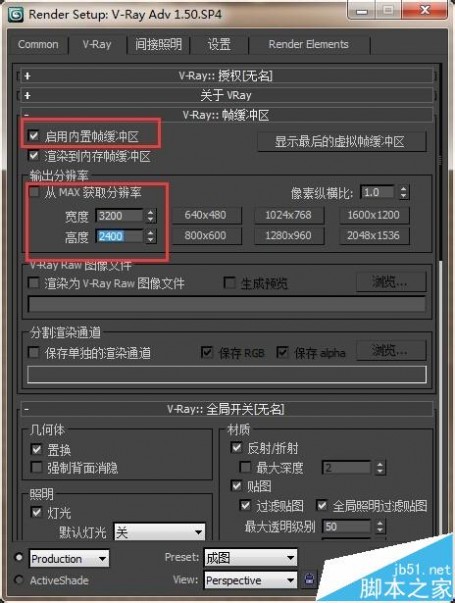
2、类型:自适应确定性蒙特卡洛;抗锯齿过滤器:Mitchell-Netravali;环境:打开
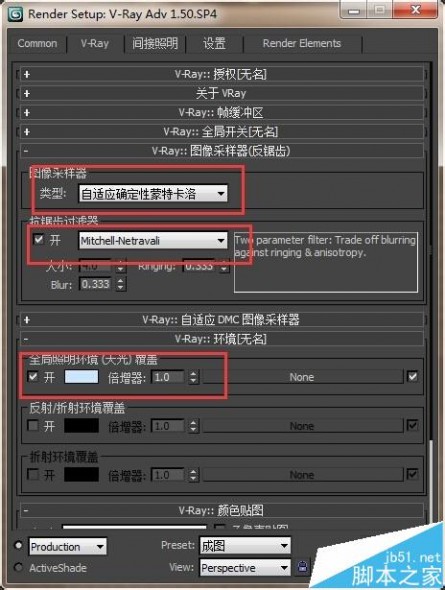
3、勾选钳制输出
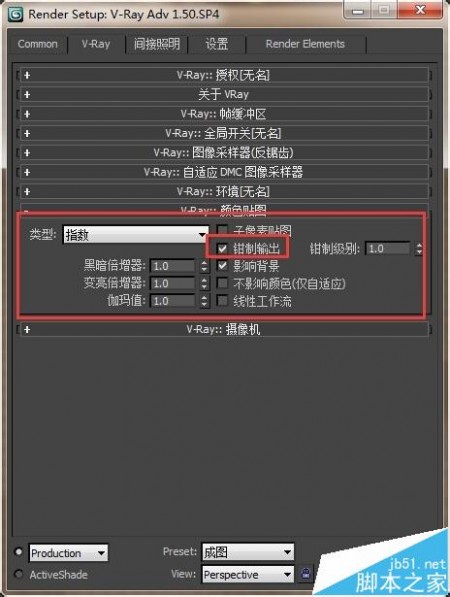
4、打开间接照明;二次反弹的全局照明引擎改为灯光缓存

5、发光图:中;半球细分:50;插值采样:30
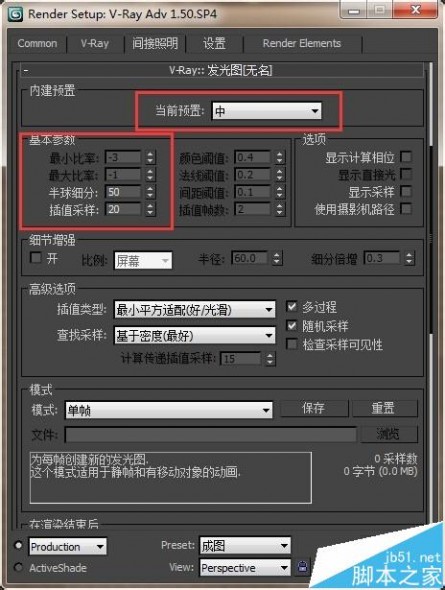
6、灯光缓存:细分1800
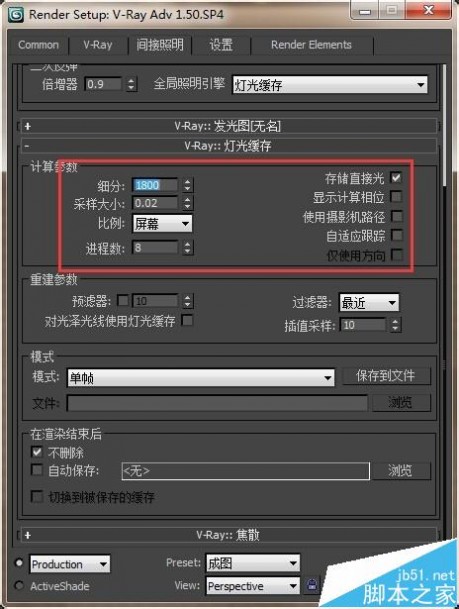
二 : 3DMAX中文版vray 1.5 rc5汉化版的分布渲染设置方法
3DMAX中文版vray 1.5 rc5汉化版的分布渲染设置方法



三 : VR渲染测试小图参数设置及大图渲染参数设置
VR渲染测试小图参数设置及大图渲染参数设置
一、测试阶段设置
1、 全局开关面板:关闭3D默认的灯光,关闭“反射/折射”和“光滑效果”
2、 图像采样器:“固定比率”,值为1。(www.61k.com]
3、 关闭“抗锯齿过滤器”。
4、 首次光照引擎---发光贴图:预设[非常低],模型细分30,插补采样10
5、 二次光照引擎---灯光缓冲:细分100
6、 RQMC采样器:适应数量0.95 噪波阈值:0.5 最小采样值8 全局细分倍增器:0.1
7、灯光和材质的细分值都降低5—8
二、出图阶段设置
1、全局开关面板:打开“反射/折射”和“光滑效果”
2、图像采样器:“自适应准蒙特卡洛”。
3、打开“抗锯齿过滤器”,选择“Mitchell-Netravali”
4、首次光照引擎---发光贴图:预设[中],模型细分50,插补采样30
5、二次光照引擎---灯光缓冲:细分1200
6、RQMC采样器:适应数量0.8 噪波阈值:0.005 最小采样15 全局细分倍增器:2
7、灯光和材质的细分值可增加20—50
一下为出大图设置
小图 VR渲染测试小图参数设置及大图渲染参数设置
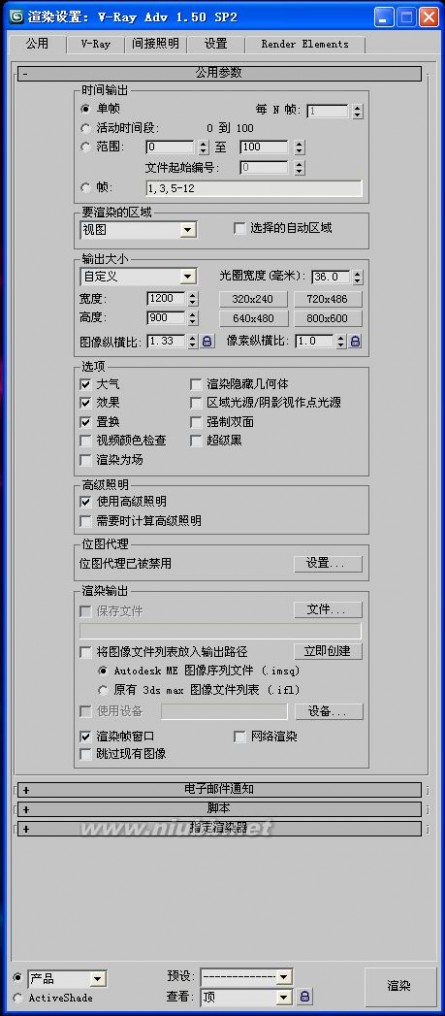
小图 VR渲染测试小图参数设置及大图渲染参数设置
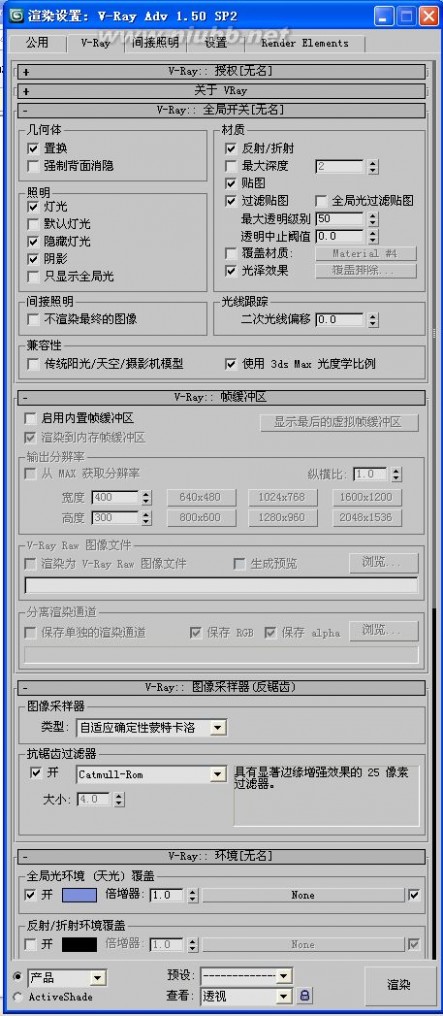
小图 VR渲染测试小图参数设置及大图渲染参数设置
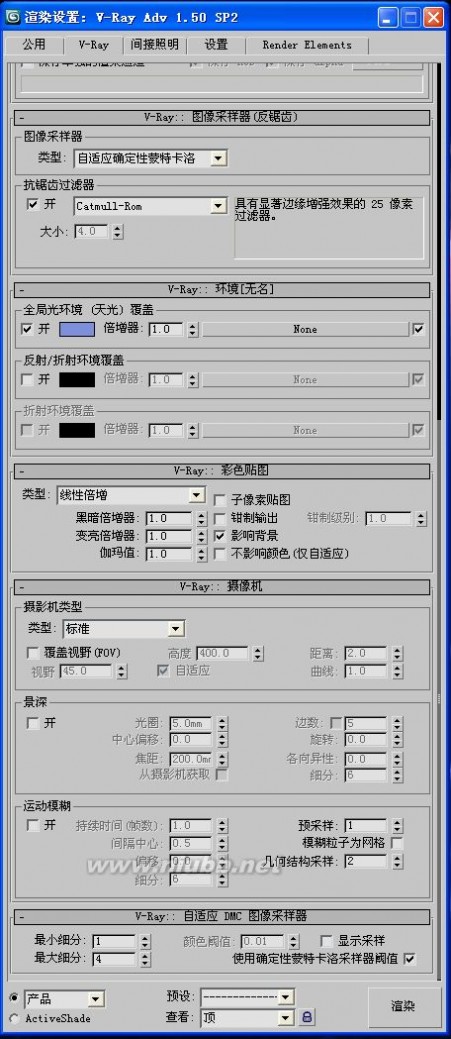
小图 VR渲染测试小图参数设置及大图渲染参数设置
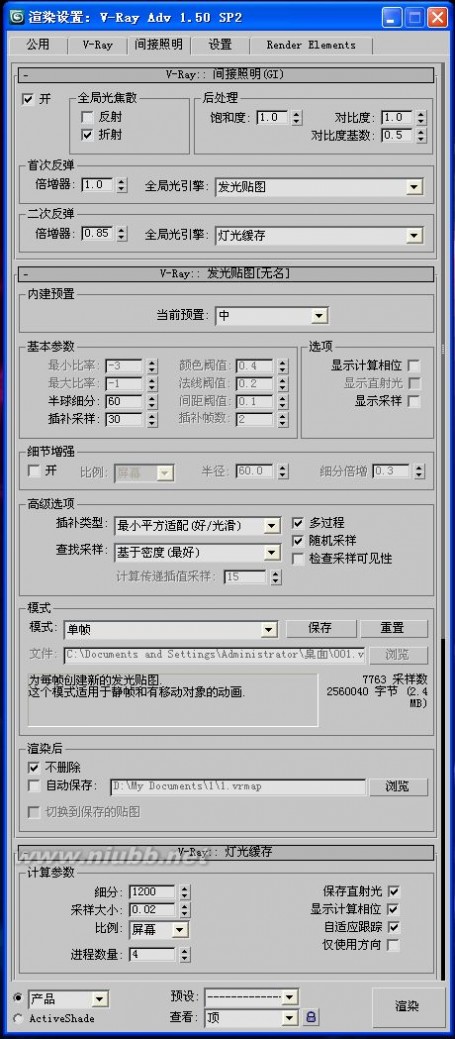
小图 VR渲染测试小图参数设置及大图渲染参数设置
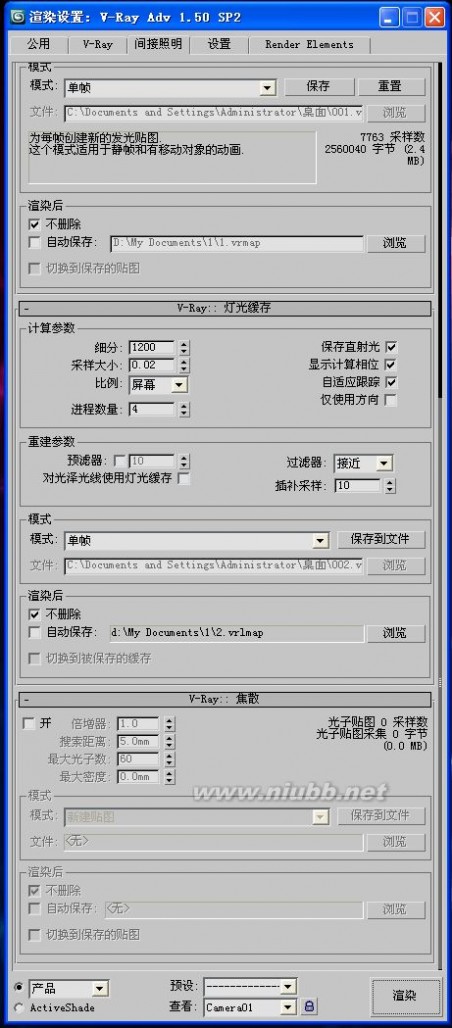
小图 VR渲染测试小图参数设置及大图渲染参数设置
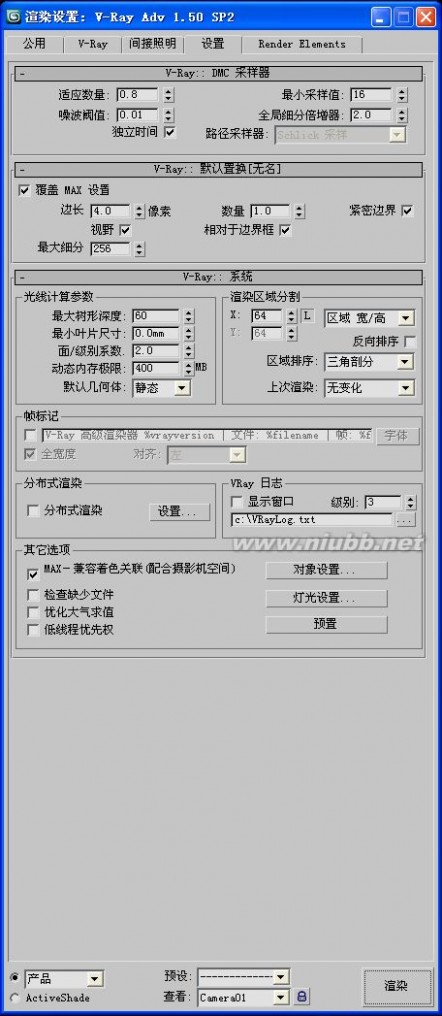
小图 VR渲染测试小图参数设置及大图渲染参数设置
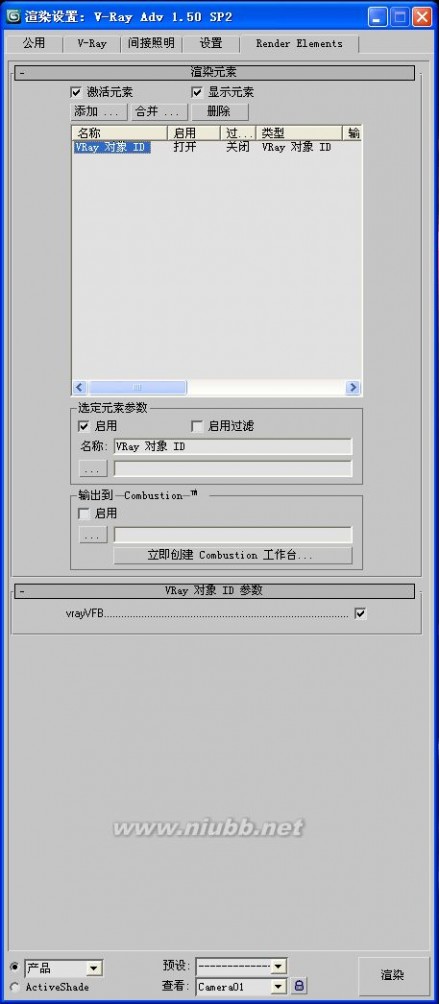
扩展:vr3.0渲染大图参数 / vr渲染大图参数设置 / vr渲染大图参数
四 : Very渲染器设置方法及渲染作品展示
[使用V-Ray RT进行GPU渲染的使用方法]
1.对渲染器进行配置
2.切换CPU或GPU,一定要先关掉帧缓存渲染结果窗口,否则无法切换!


VERY Very渲染器设置方法及渲染作品展示
说明:
1.VRay-RT的实时渲染,可以使用CPU和GPU完成,要进行二者的切换,一定要先关掉渲染结果的帧缓存,选OpenCL就是进行GPU渲染。(www.61k.com)
2.目完VRay-RT的实时渲染,还受许多限制,许多材质类型及渲染效果还得不到支持,还不能做为出图的最终渲染,其渲染结果跟产品级渲染还没法比,适用于简单材质的产品效果的预视,对材质及场景复杂的建筑效果图来说,没有太大的实用价值,不过对于使用双显卡,双显示器的用户,可以在使用一个显卡做图的过程,用另一个显卡来渲染大效果,也是很好玩的事啊!
by Ma5
[英文软件简介]
V-Ray for 3ds Max is the core development of Chaos Group, which allows users to quickly and easily create realistic images while giving them full control over the 3D production process. After 8 successful years on the CG market the second version of V-Ray for 3ds Max is already officially released and with a revived logo.
V-Ray 2.0 for 3ds Max is a complete rendering solution, which combines the power of the distinguished V-Ray rendering engine with the flexibility and unprecedented speed of the interactive rendering system V-Ray RT, now running on GPUs. Check out the new enhanced features of V-Ray 2.0 for 3ds Max.
To check out V-Ray 2.0 upgrade availability and price policy, please click here.
The V-Ray rendering system has a rich set of features and we have listed some of the major ones below. Please be aware that every feature is a subject to change without advanced notice. To read the full list of features and capabilities visit the V-Ray documentation.
Core architecture
Multi-platform object-oriented API
Fully multithreaded core
Unified sampling system based on Schlick sampling
Distributed rendering
Efficient shading system specifically optimized for ray-tracing
Modular architecture - many components of the system can be replaced with custom ones
Geometry
Efficient geometry handling
True instance rendering
On-demand dynamic geometry creation
On-demand geometry loading from disk files
Displacement mapping
Catmull-Clark and Loop subdivision surfaces
Extensible with custom geometric primitives through the V-Ray SDK
VERY Very渲染器设置方法及渲染作品展示
Image sampling
Three different image sampling methods
Full-scene antialiasing
Progressive path tracing
Support for additional render elements (diffuse, reflection, GI etc)
Advanced color (tone) mapping controls
Extensible with custom image samplers through the V-Ray SDK
Illumination
Physically accurate full global illumination solutions
Different GI algorithms: path tracing, irradiance cache, photon maps, light cache
Reusable GI solutions for accelerated rendering of walk-through animations and animations with dynamic objects
Physically accurate area lights
Efficient illumination from HDR environments
Procedural sun & sky models
Extensible with custom lights through the V-Ray SDK
IES photometric lights
Shaders
Physically plausible materials
Blurry reflections/refractions
Accurate hilights
Sub-surface scattering
Support for efficient material layering
Extensible with custom shaders through the V-Ray SDK
Camera effects
Depth-of-field with bokeh effects
Accurate motion blur
Physical camera model
Extensible with custom cameras through the V-Ray SDK
Extras
Toon effect
Fur generator/raytracer
Extended matte/shadow capabilities
Support for Render-to-Texture mode of 3ds Max
VRaySphereFade to isolate only specific portions of the scene for compositing
Frame buffer
V-Ray specific frame buffer with integrated color corrections and display of multiple rendering elements
VERY Very渲染器设置方法及渲染作品展示
Direct rendering to disk for extremely large images, either as OpenEXR files or as .vrimg files
NOTE: The new version V-Ray 2.0 for 3ds Max will not currently support MetaSL shaders. The opportunity to create your own or download high quality materials from MetaSL Material Library will most definitely become a part of our next major release.
Copyright ?2011, Chaos Software
[中文界面]
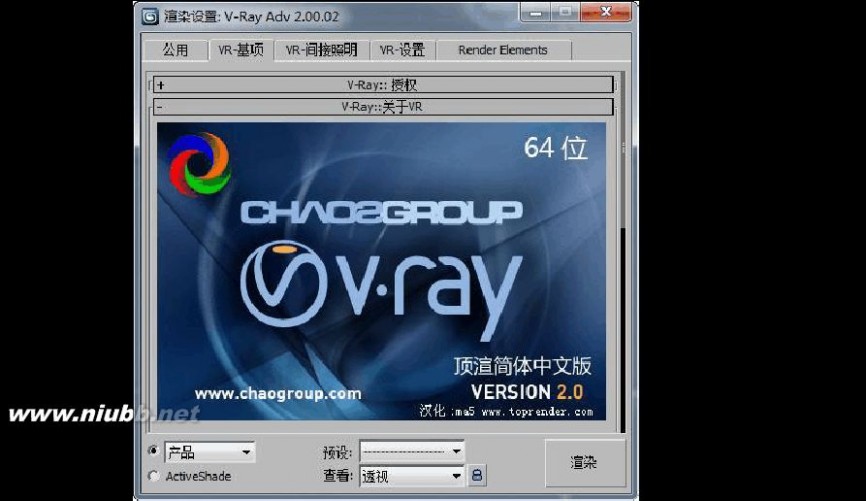
VERY Very渲染器设置方法及渲染作品展示

扩展:very渲染器 / 3dvery渲染器 / very2009渲染器
VERY Very渲染器设置方法及渲染作品展示
[渲染实例]
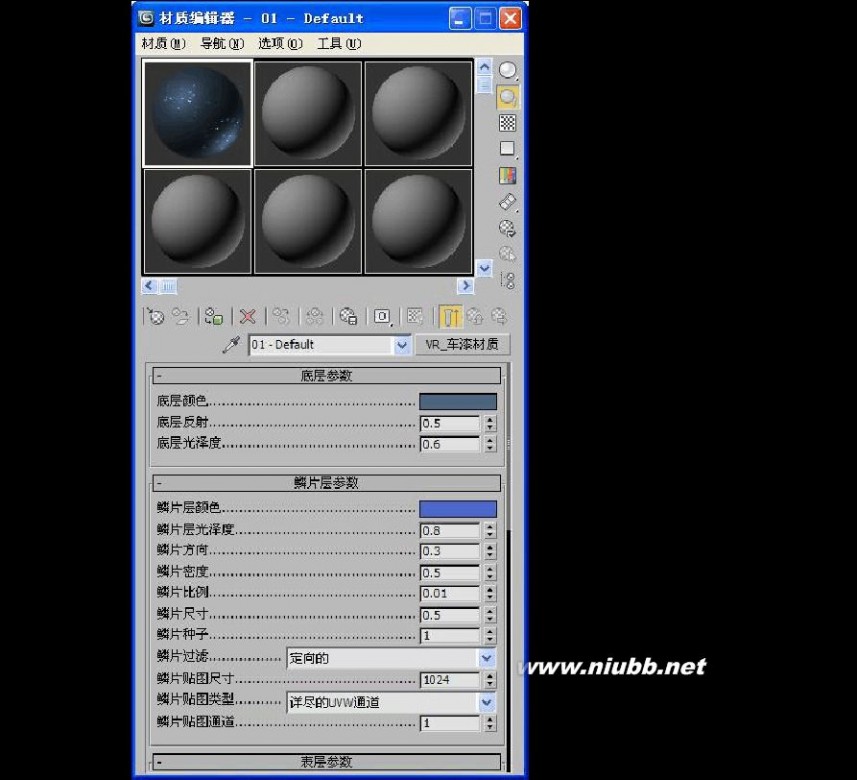
VERY Very渲染器设置方法及渲染作品展示
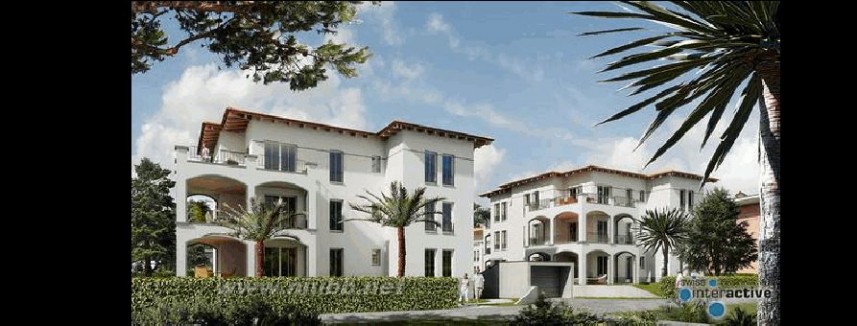


VERY Very渲染器设置方法及渲染作品展示
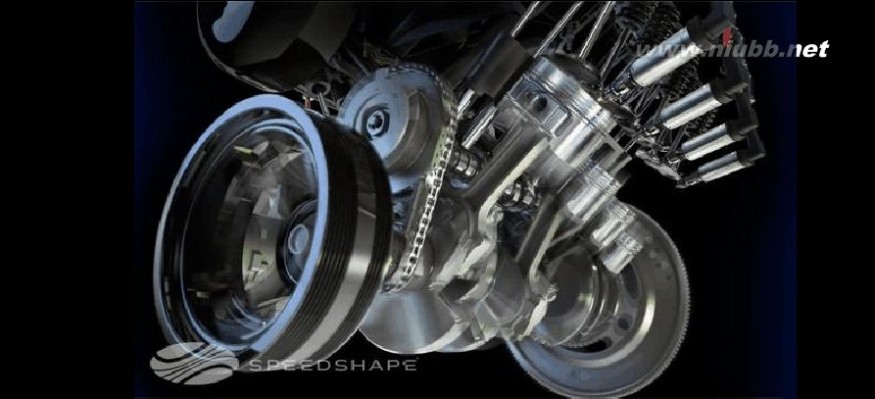

扩展:very渲染器 / 3dvery渲染器 / very2009渲染器
五 : ae怎么分段渲染? AE分段渲染输出的设置方法
AE的渲染输出时间往往较长,这时候就可以选择分段输出
1、我们直接到输出这一步,点击composition 接着点击Add to Render Queue,或者直接用快捷键ctrl+M

2、在左下角找到黄色字体best settings,点开

3、弹出如下对话,点开Custom...这一项
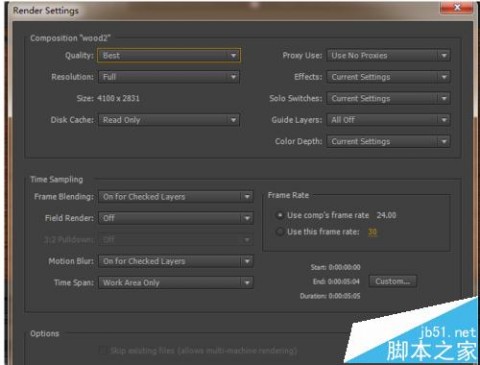
4、弹出的对话框有三项,start即开始渲染的位置,,如设为0:00:05:00即从第五秒开始渲染,end这一项若设为0:00:10:00即第10秒时结束,duration会自动变化,它表示的是这段视频的时间
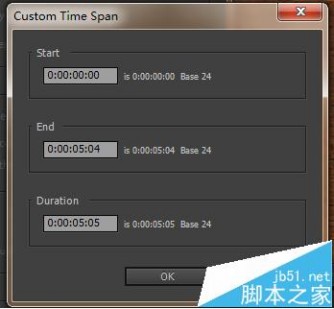
5、最后你就可以输出你想要输出的那段视频。
相关推荐:
ae怎么打包工程文件? ae打包文件渲染的方法
AE怎么导出mp4类型文件? ae渲染输出mp4的详细教程
怎么加快ae渲染速度? AE加快渲染视频速度的详细教程
本文标题:3dmax渲染设置-3dmax中怎么设置vr相片级成品最终渲染参数?61阅读| 精彩专题| 最新文章| 热门文章| 苏ICP备13036349号-1